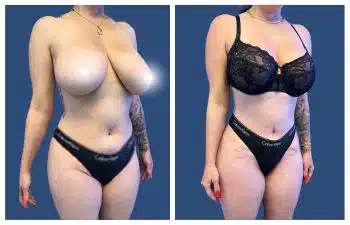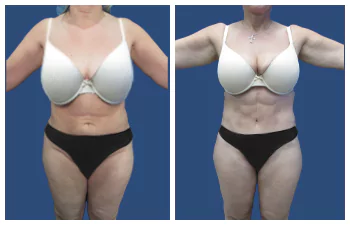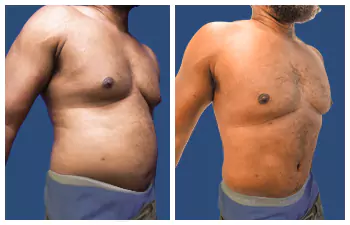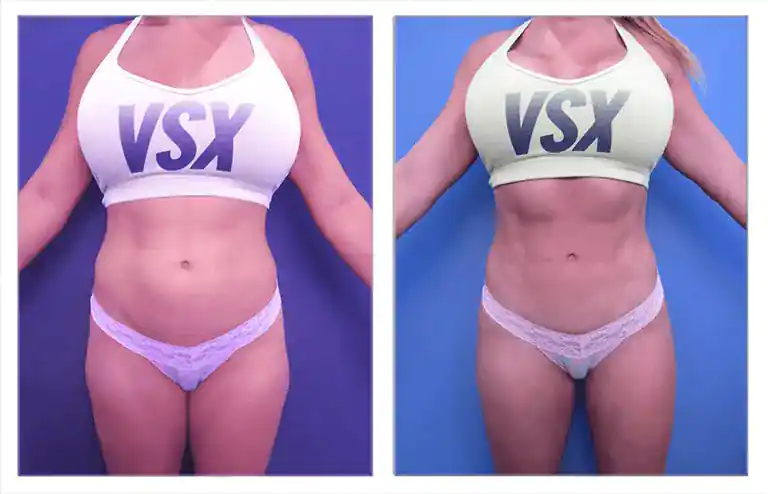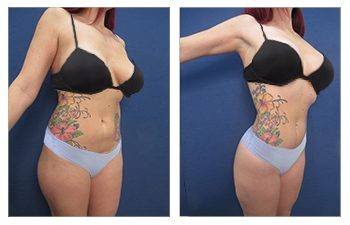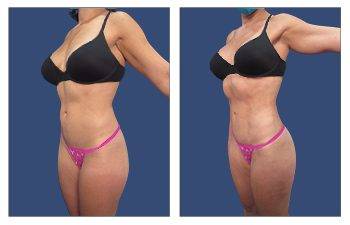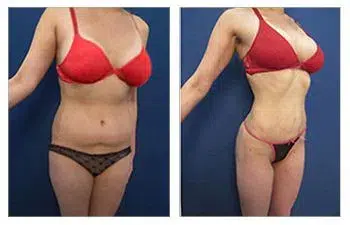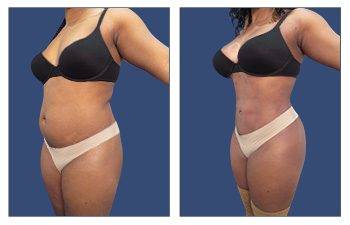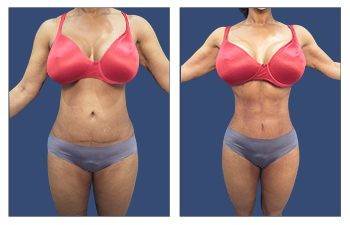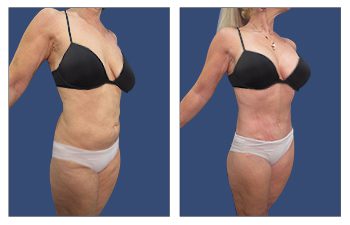Introduction: Compression garment after liposuction
Wearing compression garments after liposuction offers several key benefits for the recovery process and helps achieve the desired cosmetic results. These garments provide support and stability to the treated area, reducing swelling and bruising while promoting proper healing. They also help to shape and contour the body, ensuring that the results of the liposuction procedure are maximized.
There are different types of medical compression garments available for various parts of the body, each with specific uses after liposuction. For the abdomen and flanks, there are abdominal binders and girdles that provide uniform compression and support. For the arms and thighs, there are sleeves and shorts designed to target those specific areas. Additionally, there are full-body suits for comprehensive compression.
Overall, wearing these garments aids in the recovery process by minimizing discomfort and promoting the healing of the skin and tissues. They also play a crucial role in achieving the desired cosmetic results by ensuring that the body contours effectively and heals properly.
What Are Compression Garments?
Compression garments are specialized clothing designed to provide support and compression to specific areas of the body. They play a crucial role in the recovery process after plastic surgery procedures such as liposuction, breast augmentation, and tummy tucks.
The purpose of compression garments in plastic surgery recovery is to reduce swelling, bruising, and pain while also minimizing the risk of complications. The consistent pressure applied by these garments helps to encourage proper blood circulation and lymphatic drainage, which aids in faster healing.
By immobilizing and supporting the surgical site, compression garments also promote tissue adherence and reduce the risk of seromas, hematomas, and other post-operative complications.
In addition, wearing compression garments following plastic surgery procedures can enhance the final results by minimizing the risk of developing irregularities and promoting skin retraction.
Overall, the benefits of compression garments in plastic surgery recovery include faster recovery, reduced swelling and bruising, better pain management, and an improved final aesthetic outcome.
The Role of Compression Garments in Post-Liposuction Recovery
Compression garments play a crucial role in post-liposuction recovery by optimizing recovery, reducing swelling, and achieving optimal results. These garments are specifically designed to apply pressure to the treated areas, helping to minimize fluid build-up and improve circulation.
The science behind compression garments lies in their ability to promote blood flow and lymphatic drainage, which aids in reducing swelling and preventing the accumulation of fluid in the targeted areas. By providing support and stability to the newly contoured body, they also help to ensure that the skin conforms to the new shape and reduce the risk of sagging or irregularities.
In addition to these benefits, compression garments can also help to alleviate discomfort and bruising, promote healing, and minimize the risk of complications such as seromas or hematomas. By promoting proper tissue recovery and reducing post-operative swelling, compression garments play a crucial role in enhancing the overall results of liposuction procedures.
In summary, compression garments are an essential component of post-liposuction recovery, offering a multitude of benefits that are rooted in science and proven to be effective in achieving optimal results.
Benefits Compression Garments Provide
Compression garments are essential for individuals recovering from liposuction surgery as they offer a range of benefits. First and foremost, they aid in reducing swelling and bruising by providing gentle pressure to the treated areas, promoting the absorption of excess fluid and preventing the buildup of edema. Additionally, compression garments help manage pain and discomfort, as well as minimize the risk of developing hematoma and seroma.
Furthermore, these garments play a crucial role in minimizing scarring by supporting the skin during the healing process. By applying even pressure to the treated areas, compression garments promote better circulation and tissue adherence, ultimately leading to smoother and more uniform results. Overall, wearing compression garments post-liposuction surgery results in a faster recovery and an enhanced final outcome, as they support the body’s natural healing process and aid in re-contouring the treated areas. Patients can expect to experience less swelling and achieve their desired results sooner with the added support and benefits provided by compression garments.
How Should Compression Garments Fit
Compression garments should fit snugly but not be overly tight. They should cover the full extent of the treatment area to provide the necessary support and compression. It is important to adjust the garment as needed, especially as the swelling goes down during the recovery process.
Following your surgeon’s aftercare instructions is crucial for a successful recovery. This includes wearing the compression garment as directed and potentially switching out for smaller sizes as the recovery progresses. Your surgeon will provide guidance on when it is appropriate to transition to a smaller size, as this will help ensure that the compression garment continues to provide the necessary support and compression as your body changes during the healing process.
The recovery process can vary for each individual, so it is essential to follow your surgeon’s aftercare instructions and to communicate any concerns or changes in your condition. By following these guidelines and staying proactive in adjusting the compression garment as needed, you can help promote optimal healing and the best possible outcome for your treatment.
How Long Do Compression Garments Have To Be Worn
The duration for wearing compression garments after liposuction can vary depending on several factors. The extent of the liposuction procedure, the type of liposuction performed, the surgeon’s recommendation, and the patient’s healing response all play a role in determining the length of time for wearing compression garments.
During the initial stages of recovery, the compression garments are crucial for reducing swelling, promoting healing, and shaping the body. The level of compression needed will vary throughout the recovery process, with more support required in the early stages and gradually decreasing as the body heals.
Generally, patients are advised to wear compression garments 24 hours a day for the first few weeks after liposuction, with the option to transition to wearing them primarily at night after the initial recovery period. As the healing progresses, patients can transition to less bulky garments as advised by their surgeon.
Ultimately, the timeframe for wearing compression garments after liposuction will be based on the individual’s recovery progress and their surgeon’s recommendation, with the goal of ensuring optimal results and minimizing complications
Tips for Wearing and Caring for Compression Garments
It is crucial to follow the surgeon’s aftercare instructions, including consistently wearing compression garments, as they play a vital role in the healing process after surgery. Compression garments help to reduce swelling, provide support to the treated area, and promote proper tissue healing. Consistent wear of these garments is essential for achieving optimal results. As the swelling reduces, it is important to ensure that the compression garments still fit properly and make any necessary sizing adjustments.
Maintaining good hygiene when wearing compression garments is also essential for preventing any potential infections. Washing the garments regularly and air drying them is crucial for keeping them clean and free from bacteria. Investing in spare garments is advisable to ensure that there is always a clean set available while the others are being washed. This is particularly important for those who need to wear the garments for an extended period, as it allows for continuous hygiene maintenance.
Proper care and consistent wear of compression garments can significantly impact the post-surgery recovery process and the overall outcome of the procedure. Following the surgeon’s instructions, ensuring proper fit, and maintaining good hygiene are essential for yielding the best possible results. We recommend that you purchase 2 garments for your upcoming liposuction surgery. Two compression garments will allow you to wash one while wearing the other. Alternating compression garments is important following liposuction surgery since patients will universally observe leakage of lipoaspirate throughout the postoperative period that results the need to wash your garments. Less often, a third garment will be purchased after one month that is smaller than the original two to accommodate the resolving swelling appreciated from your body.
What Can Happen if You do not Wear Compression Garments
After undergoing liposuction, not wearing compression garments can lead to several potential consequences. Without the support of compression garments, there is an increased risk of swelling, which can prolong the recovery process and lead to discomfort. Additionally, without the consistent pressure provided by compression garments, the results of the liposuction may be uneven and less optimal. Moreover, not wearing compression garments can increase the risk of complications such as seroma or hematoma formation.
It is crucial to wear compression garments for optimal healing and results while balancing comfort and well-being. Compression garment
Conclusion: Compression garment after Liposuction
In conclusion, wearing compression garments after liposuction offers numerous benefits for recovery. These garments help control swelling and bleeding by applying gentle pressure to the treated areas. They also aid in skin shrinkage, promoting a smoother and more even appearance. Additionally, compression garments provide vital support for the body, helping to reduce discomfort and promote healing.
It is crucial to wear compression garments for at least six weeks post-surgery to ensure the best results. During this time, transitioning from a stage one to a stage two garment is important as it provides the right level of compression as the body continues to heal.
The best types of compression garments for liposuction recovery are designed to provide targeted compression to the treatment areas while ensuring comfort and ease of movement. These garments are often made from breathable and flexible materials, providing the necessary support for the healing process.
Overall, wearing compression garments after liposuction plays a crucial role in ensuring a smooth and successful recovery, providing the support and compression needed for optimal healing.
s help to reduce swelling, promote proper healing, and ensure that the results of the liposuction are as smooth and even as possible. It is important to consult with the surgeon if any concerns or discomfort arise, as they can provide guidance and address any issues that may arise.
Therefore, it is essential to prioritize wearing compression garments after liposuction to ensure a smooth and successful recovery process.

